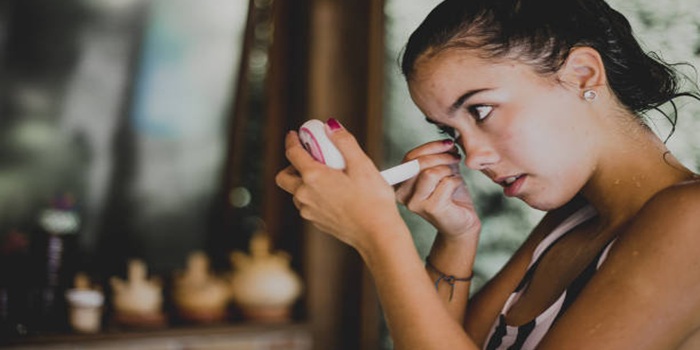Colored contact lenses are a fun and fashionable way to enhance or transform your eye color, whether for everyday wear or special occasions. From bold blues to subtle hazel brown contacts, these lenses can give your look a whole new vibe. However, like all contact lenses, colored ones require proper care to protect your eye health and prolong the life of the lenses.
In this comprehensive guide, we’ll walk you through the essential do’s and don’ts of caring for your colored contact lenses, so you can enjoy your lenses safely and confidently.
Why Proper Care Matters
Colored contact lenses, whether prescription or cosmetic, sit directly on the surface of your eyes. This means any lapse in hygiene or handling can lead to serious consequences such as eye infections, irritation, or even vision loss.
Taking the time to clean, store, and handle your lenses correctly helps prevent:
- Bacterial contamination
- Dryness and discomfort
- Scratches on the cornea
- Cloudy or blurry vision
- Reduced lens life
Do’s: How to Properly Care for Your Colored Contact Lenses
1. Wash and Dry Your Hands Before Handling Lenses
Always begin by washing your hands with soap and water. Dry them thoroughly with a lint-free towel. This removes dirt, oils, and bacteria that could transfer to your eyes or lenses.
Tip: Avoid oily or heavily scented soaps that can leave a residue on your hands and irritate your eyes.
2. Use Fresh Contact Lens Solution Every Time
Never reuse or “top off” old solution in your lens case. Used solution may contain debris or microbes that can lead to infections.
Instead:
- Use a fresh multipurpose or saline solution each time
- Clean your lenses thoroughly with the solution before wearing them
3. Rub and Rinse Your Lenses (Even with “No-Rub” Solutions)
Even if the packaging says “no-rub,” gently rubbing your lenses with your fingers and rinsing them removes more surface deposits and bacteria.
Steps:
- Place the lens in your palm
- Add a few drops of solution
- Gently rub with your finger for 10–15 seconds
- Rinse thoroughly before inserting into your eye or storing
4. Clean and Replace Your Contact Lens Case Regularly
Lens cases can harbor bacteria if not cleaned properly.
- Rinse your case with fresh lens solution (not water!)
- Let it air-dry upside down on a clean tissue
- Replace the case every 1–3 months
5. Follow the Replacement Schedule
Each type of lens has a specific wear period (daily, bi-weekly, monthly). Sticking to this schedule reduces the risk of deposits building up and ensures your lenses remain safe to use.
Never wear lenses beyond their recommended time—even if they feel fine.
6. Remove Your Lenses Before Sleeping (Unless Approved)
Sleeping in contact lenses reduces oxygen flow to your eyes and increases your risk of serious infections like microbial keratitis.
Only sleep in lenses if your eye doctor has prescribed extended-wear lenses.
7. Carry Eye Drops for Comfort
If your eyes tend to dry out during the day, especially in air-conditioned or heated environments, use lubricating eye drops approved for use with contact lenses.
Make sure the drops are preservative-free and lens-compatible.
8. Visit Your Eye Care Professional Regularly
Regular checkups help ensure that your eyes remain healthy and that your lenses still fit properly. Your optometrist can also guide you on proper lens hygiene specific to your eyes and lens type.
Don’ts: What to Avoid When Wearing Colored Contact Lenses
1. Don’t Use Tap Water to Clean Lenses or Cases
Tap water can contain microorganisms like Acanthamoeba, which may lead to severe infections and vision damage.
Always use sterile contact lens solution—never rinse with water.
2. Don’t Share Your Lenses
Even if your friend has the same prescription or eye color, never share your contact lenses. Doing so increases the risk of spreading bacteria, viruses, and even corneal damage.
Colored contact lenses are a personal item—treat them like your toothbrush!
3. Don’t Wear Makeup Before Inserting Lenses
Makeup particles can get trapped under the lens or smudge your vision.
Apply makeup after putting your lenses in and remove lenses before taking off your makeup at night.
Pro Tip: Use oil-free and fragrance-free products near your eyes.
4. Don’t Wear Lenses When Swimming or Showering
Water, whether from a pool, lake, or shower, can harbor harmful bacteria and increase the risk of infection. If you must swim with lenses, wear waterproof goggles and remove lenses immediately afterward.
5. Don’t Wear Torn or Damaged Lenses
Even small tears or scratches can cause irritation, lead to infection, or scratch your cornea. Inspect your lenses before each use, and discard them if they’re damaged.
6. Don’t Buy Lenses from Unregulated Sellers
Only purchase contact lenses—including colored or cosmetic ones—from licensed retailers with a prescription from an eye care professional. Poor-quality lenses from novelty stores or online shops may not be FDA-approved and can damage your eyes.
Special Care Tips for Hazel Brown Contacts and Other Tinted Lenses
Hazel brown contacts are a popular choice for a natural yet striking eye color change. While the care process is the same as for clear lenses, here are a few additional tips:
- Use Clear Solution: Avoid solutions with color enhancers that could distort the lens color.
- Handle with Care: Tinted lenses may be slightly thicker than regular lenses—always handle gently to avoid tearing.
- Inspect for Color Fading: If your lenses start to lose their tint or color becomes uneven, replace them even if they’re still within the wear period.
- Store Separately: If you use multiple colored lenses, store them in clearly labeled cases to avoid confusion.
Signs It’s Time to Remove Your Lenses Immediately
If you experience any of the following symptoms, remove your lenses right away and consult your eye doctor:
- Redness or swelling
- Blurry vision
- Pain or stinging sensation
- Sensitivity to light
- Discharge or excessive tearing
Don’t wait it out—your eyes are delicate, and delays can lead to complications.
Final Thoughts
Colored contact lenses can enhance your style and boost your confidence, but they come with responsibilities. Practicing proper hygiene, following usage guidelines, and recognizing warning signs are all key to enjoying your lenses without compromising your eye health.
Whether you love vibrant blues, sultry greens, or subtle hazel brown contacts, caring for your lenses the right way will ensure they remain safe, comfortable, and effective. Make eye care a priority—and let your lenses be a fun, fashionable part of your routine, not a hazard to your health.




